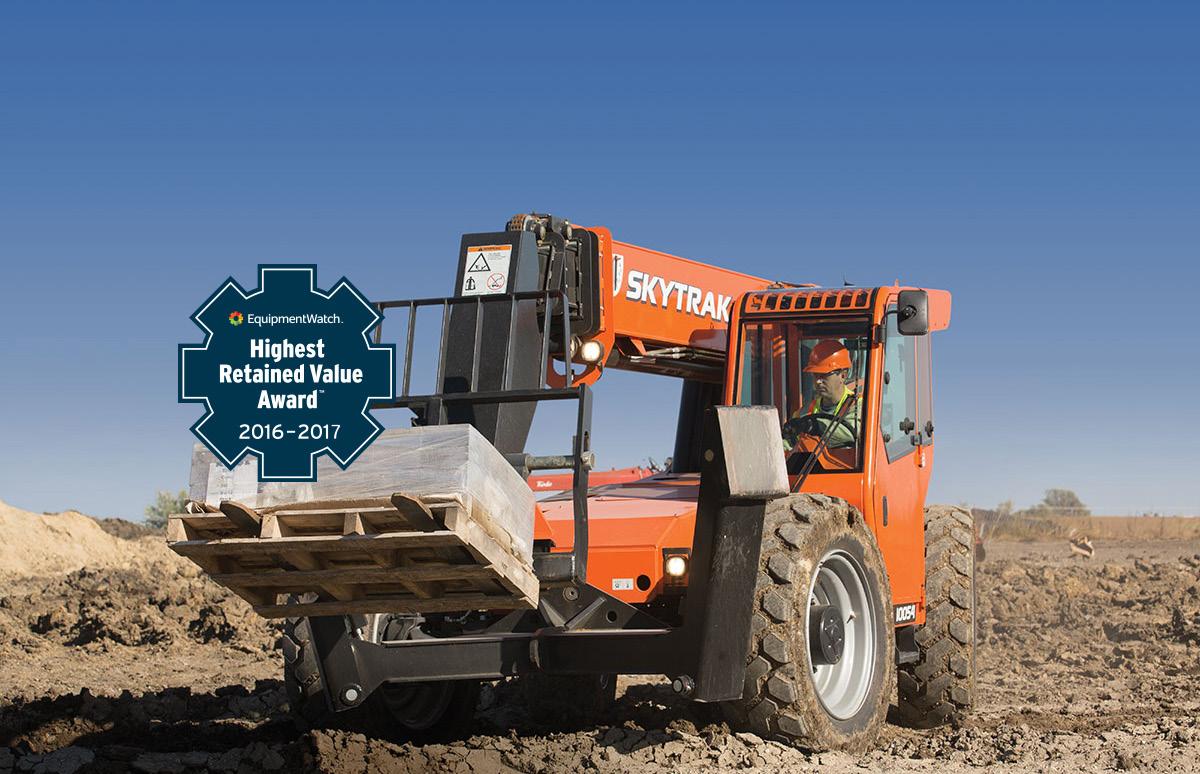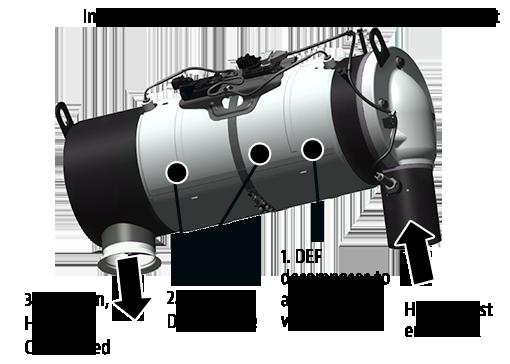
5 minute read
A look at compact telehandlers
Like their larger-sized counterparts, compact telehandlers are typically the first machines on the job site and the last to leave.
The applications for these smaller machines vary greatly from the initial phases of a large construction project, where the equipment can be found unloading trucks and delivering materials, to the closing stages, where they can be utilized for job site clean up and landscaping. Below are excerpts from a recent interview with John Boehme, JLG’s senior telehandler product manager, with more insights into today’s compact telehandler market… What markets and applications are served by compact telehandlers? The biggest market and application for compact telehandlers continues to be general construction. Other markets/applications include Residential construction, refurbishment construction, parking garage construction and maintenance, landscaping and hardscaping, as well as agriculture. An advantage of compact telehandlers in urban and suburban applications compared to larger models, or other types of equipment, is that they have a small footprint but still offer plenty of power. For example, trucks still need to be loaded/unloaded on job sites in space-restricted downtown areas, and when contractors need to move job site materials from place to place, they have to have equipment that fits on the road and can manoeuvre around various obstacles.
Are compact telehandlers taking market share from skid steers? Why or why not?
These versatile machines are able to complete so many different tasks on job sites, like loading (and unloading), picking up, carrying around, moving from place to place, lifting and placing materials and tools. This flexibility means that compact telehandlers are often one of the most highly utilized machines on a job site. With a similar size and footprint compared to a skid steer, but with the additional capabilities that only a telehandler can offer — additional lift height and forward reach, as well as exceptional terrainability — compact telehandlers offer contractors more options to choose from to get work done. For example, the ultra-compact JLG® Skytrak® 3013 telehandler can be used in place of a skid steer to give you more reach, greater lift height, increased up-and-over reach and enhanced terrainability. But it also fits on a standard trailer, so it can easily be transported between landscaping and hardscape jobs. When choosing between a compact telehandler or a skid steer loader, it really depends on the work that needs to be done and the equipment solution that a contractor is looking for. Contractors would choose a telehandler when they need additional lift height, additional forward reach and/or exceptional terrainability. Due to their size, compact telehandlers make good candidates for hybrid power/electrification. Do you see this size category as a viable ‘green’ machine? Why or why not? Technology is continuously developing, and obviously, JLG is following this closely. Globally, the focus on reducing emissions produced by off-highway
construction equipment, including telehandlers, continues to expand exponentially. Two drivers for this growth is: 1) Existing and future legislation on emissions and noise, and 2) The desire to drive down equipment’s total cost of ownership (TCO). Responding to these drivers, the aerial market has changed in the last few years. In the past, telehandlers were powered by the biggest, most powerful internal combustion (IC) engines that an individual equipment model could support. But today, that’s all changed. The new trend is toward owning and operating equipment that comes equipped with the latest hybrid technology, direct drive and/ or lithium-ion batteries. Right now, current electrical technology does tend to be more applicable to smaller machines, and there are several electricdrive telehandler models already available in the market. We also anticipate that as lithiumion batteries become more affordable, that the technology will become more accessible; therefore, there will be less need and demand for hybrid models in the future. This will be because the performance of a lithium-ion operated machine is equal to a conventional dieselpowered machine. Because of these trends, customers are asking for more electrified equipment solutions, and telehandler OEMs, including JLG, are working to provide innovative, productive solutions. So, yes, we believe that electrification options in this equipment category will continue to evolve.
Aside from telematics, what trends are occurring with compact telehandlers?
We are following the electrification and urbanization trends very closely, as well as the move toward connected job sites. As an example, with less and less open space, new buildings are becoming taller and placed closer together. This is driving higher demand for smaller footprint telehandlers, like the super compact JLG Skytrak 3013 model. And, IoT is changing how we develop equipment and how equipment interacts with each other, operators, and technicians. For operators and owners, equipment is becoming more connected, allowing it to provide valuable data throughout the workday for decision making and planning purposes. For rental companies, this connectivity can help improve fleet utilization, maintenance, serviceability and uptime. Although not specific to telehandlers, digital solutions are also expanding for use during the initial design and planning stages, through finish work. These solutions are making job sites more efficient and include BIM modelling and augmented reality apps. Both help rental companies and contractors plan for and select the right equipment for the work at hand. What are the most-recent design/ engineering updates or changes that JLG has made to its compact telehandler line? The latest compact telehandler from JLG, which includes our most recent design and engineering advances is the JLG SkyTrak 3013 telehandler. This model is designed to meet the needs of landscapers, do-it-yourself homeowners, small industrial work and agricultural applications. Its lightweight allows for transport on small tow-behind trailers. Additionally, the model features a 4-wheel drive, two-wheel rear steer, a hydrostatic drive system and two coupler options, all supported by a Kubota V-1505 diesel engine with 30.8 hp. The SkyTrak 3013 is built to be the best solution for handling and transporting materials in small spaces. When compared to skid steers, the new ultracompact machine will offer better reach into truck beds and trailers and over obstacles, in addition to better lift height for single story houses and dump trucks. The cab design is spacious, and the placement of the boom gives operators a 360-degree view. The SkyTrak 3013 is available with a variety of options, including open and fully enclosed cabs, a cold weather package, work lights, a universal skid steer coupler and a variety of tires.

Eazi Access,
+27 (0) 861 003 294, info@eazi.co.za, www.eazi.co.za










